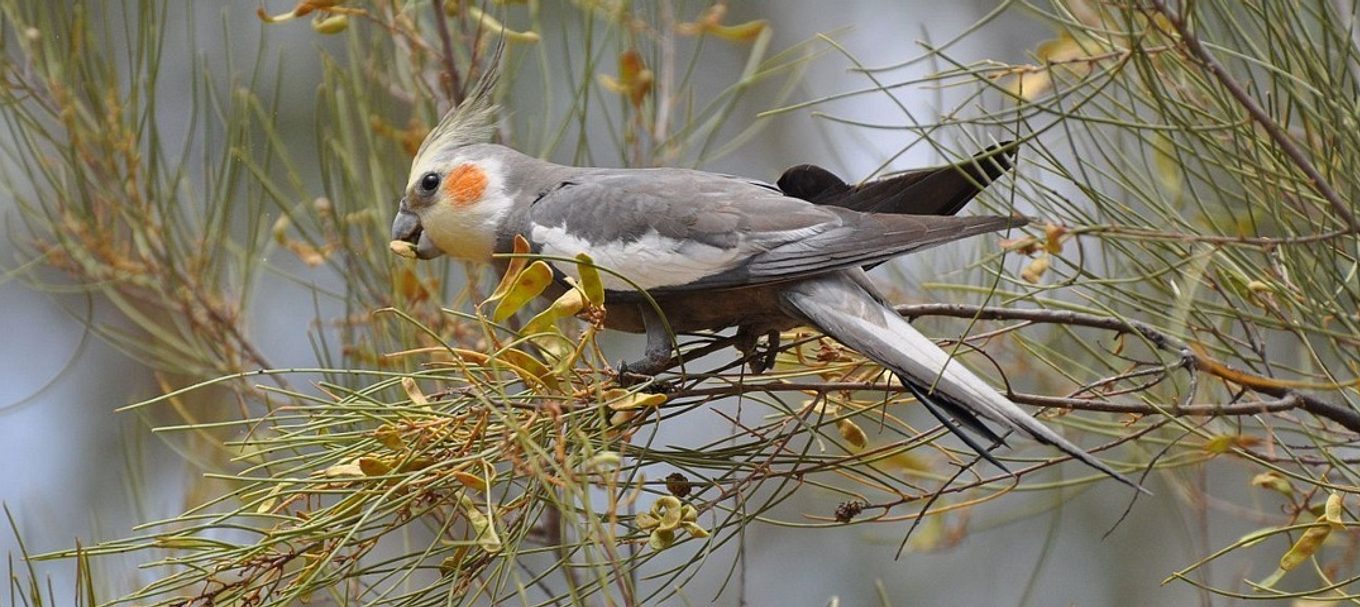
7 desert birds you might spot further south than usual
Desert bird populations go through a boom and bust cycle driven by rainfall. In wet years their numbers explode, but in long, dry periods many die, and some fly large distances to areas where they are not usually seen.
Over the past few months birdwatchers have reported sightings of desert birds in a number of agricultural and populated areas of South Australia, including places like Bordertown, Padthaway, the Mid North, the lower Eyre Peninsula and the South East, and even the odd metropolitan visit.
So keep an eye (and perhaps an ear) out for these desert beauties:
1. Budgerigar
Budgies need water every day to survive as their seed diet provides no moisture, so flocks can often be seen at waterholes or dams.
While budgies have been bred as pets in a range of colours, in the wild they are yellow and green, with a small patch of blue on the cheek.
They feed on seeds from native grasses and herbs such as saltbush. They usually travel in packs and you can’t miss their bright colours.
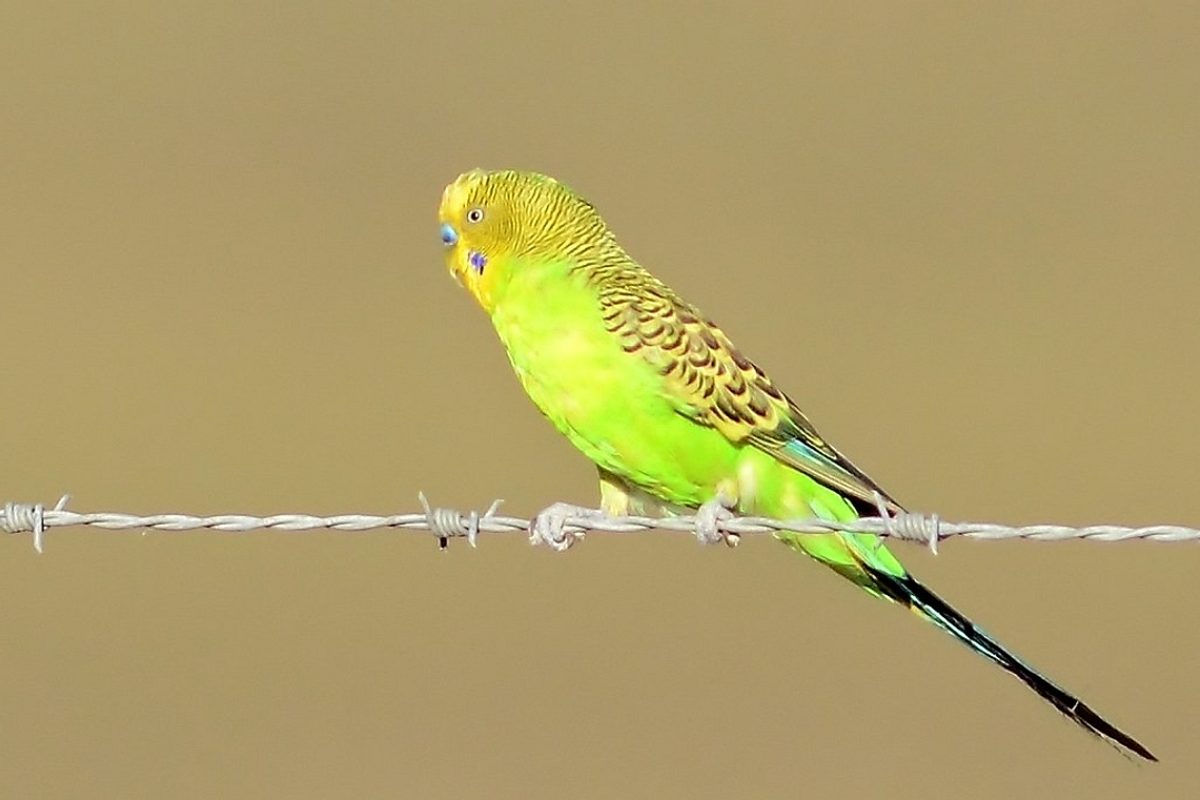
2. Crimson chat
A brilliant red crown and breast make the male crimson chat a striking sight. Combined with its white throat and black mask it looks kind of like an avian superhero. Females are a paler brown with a white throat.
These birds feed mostly on insects but will also eat nectar from flowering shrubs and trees.
You’re unlikely to mistake one of these birds for another species if you spot one.
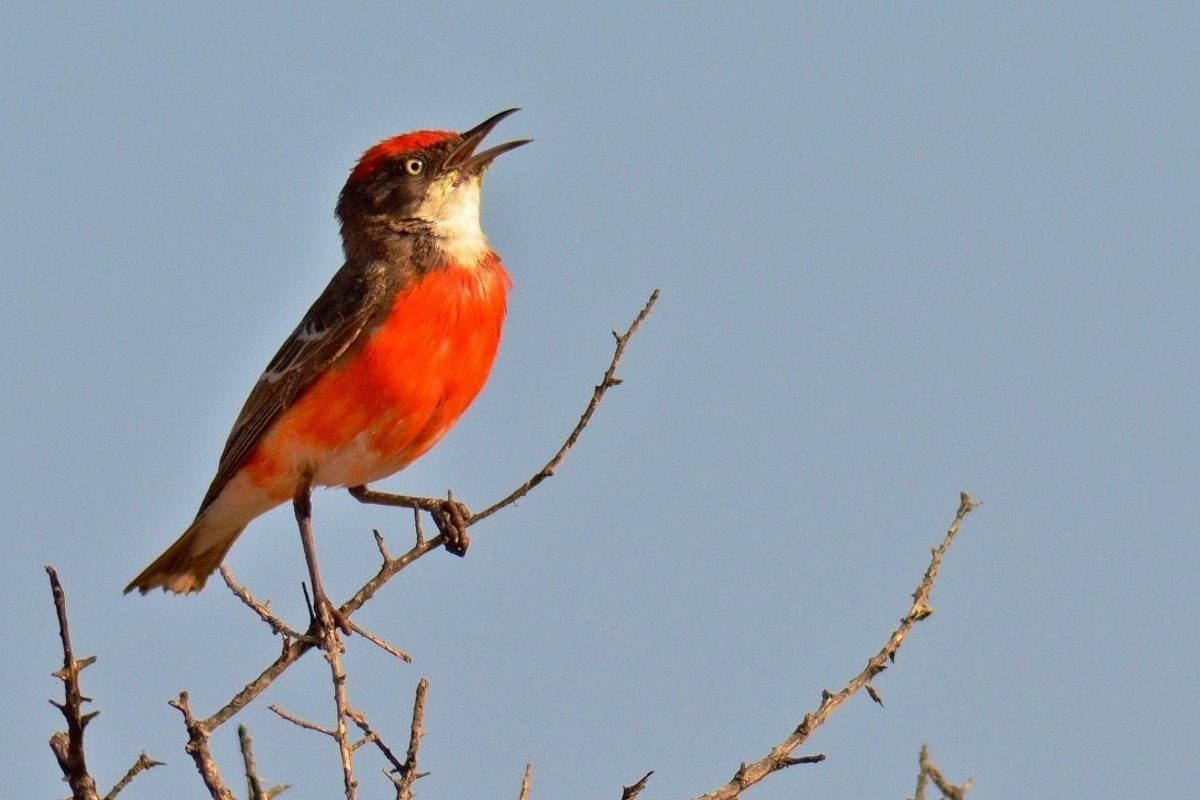
3. Cockatiel
Native to Australia, the cockatiel has become a popular pet bird around the world.
In the wild its plumage is mostly grey with a white patch on the wing. It has distinctive orange cheeks.
Wild cockatiels feed on grass seeds, nuts, berries and grains. They roost in trees near water and can breed at any time of the year when there is suitable rain.
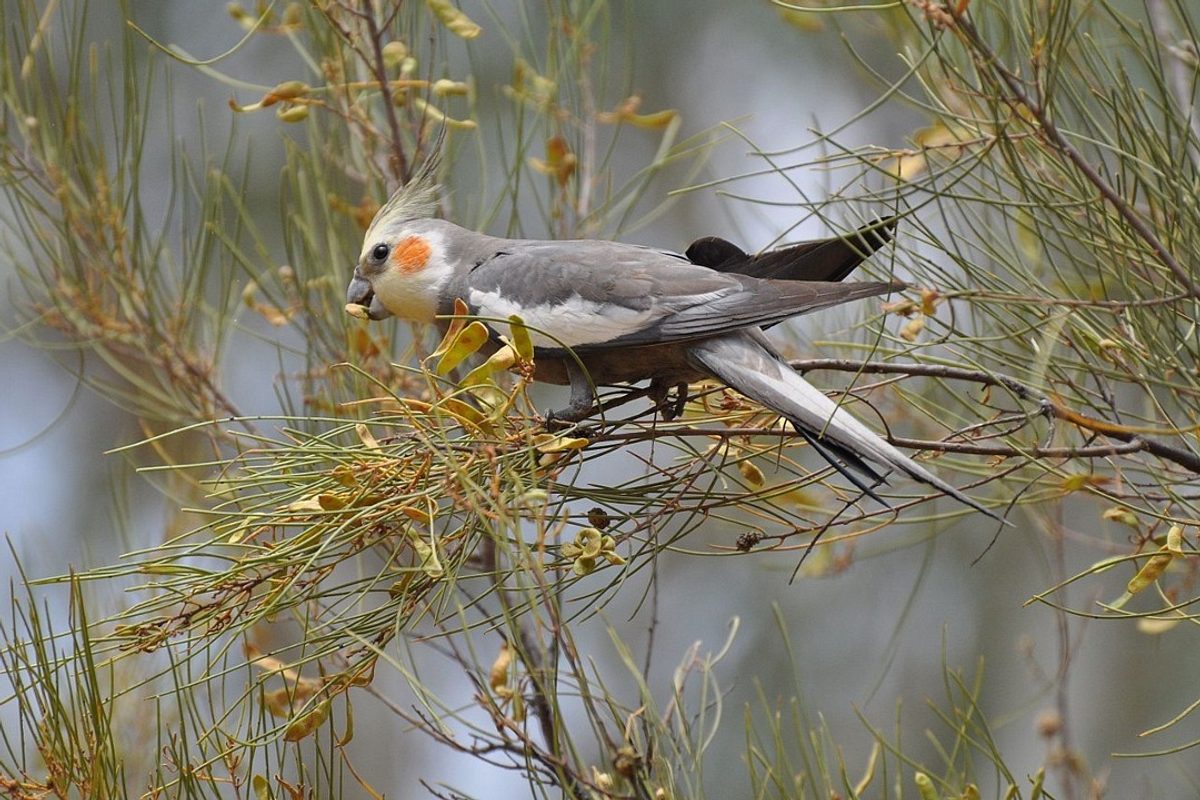
4. Black honeyeater
This small honeyeater has a long, curved bill for dipping into flowers for nectar, though it will also eat insects.
The male is black and white, with a black stripe from the centre of its chest to the abdomen. The female has a brown head and upper body and a grey-brown chest.
It has been called the charcoal bird as it has been seen in the ashes of extinguished campfires eating charcoal and ash.
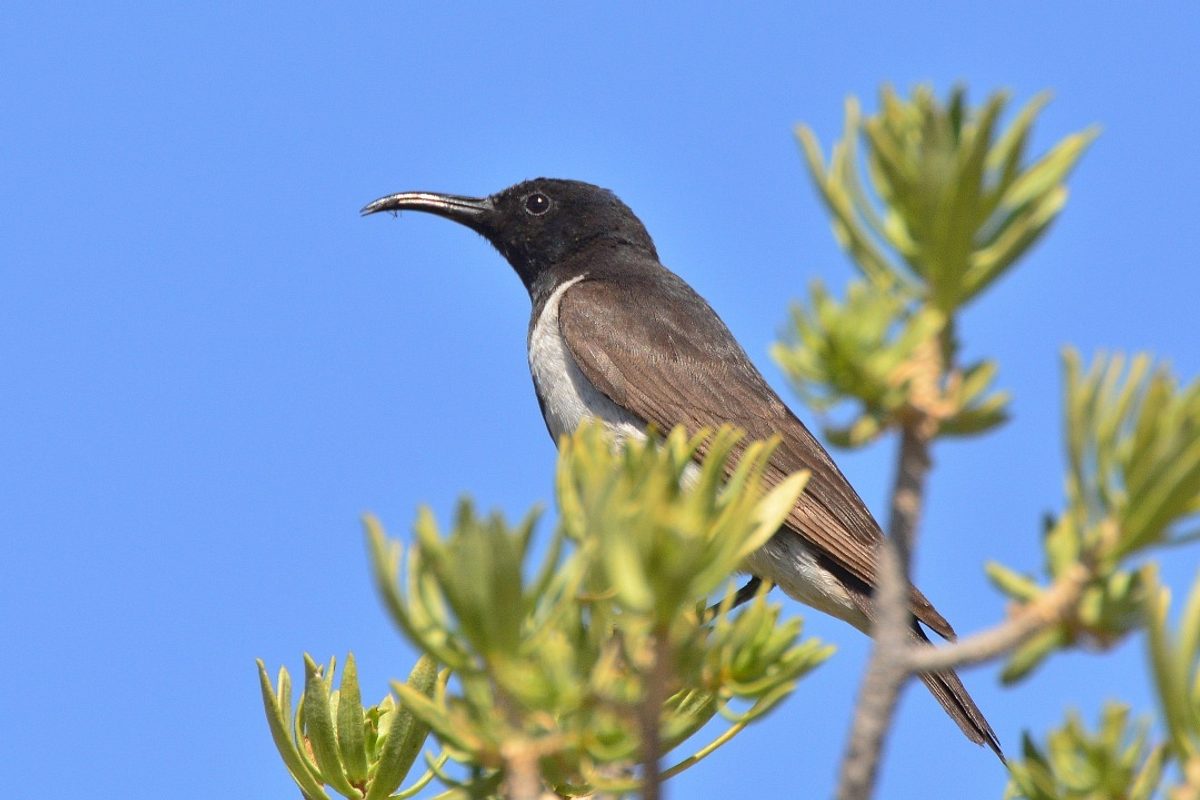
5. Pied honeyeater
Larger than the black honeyeater, this bird also has a curved bill but has the addition of a small, pale-blue patch of skin under the eyes. The male is black and white and the female is brown-grey and has a white stripe on the wings.
This bird also feeds mainly on nectar but also eats insects and sometimes fruit and seeds.
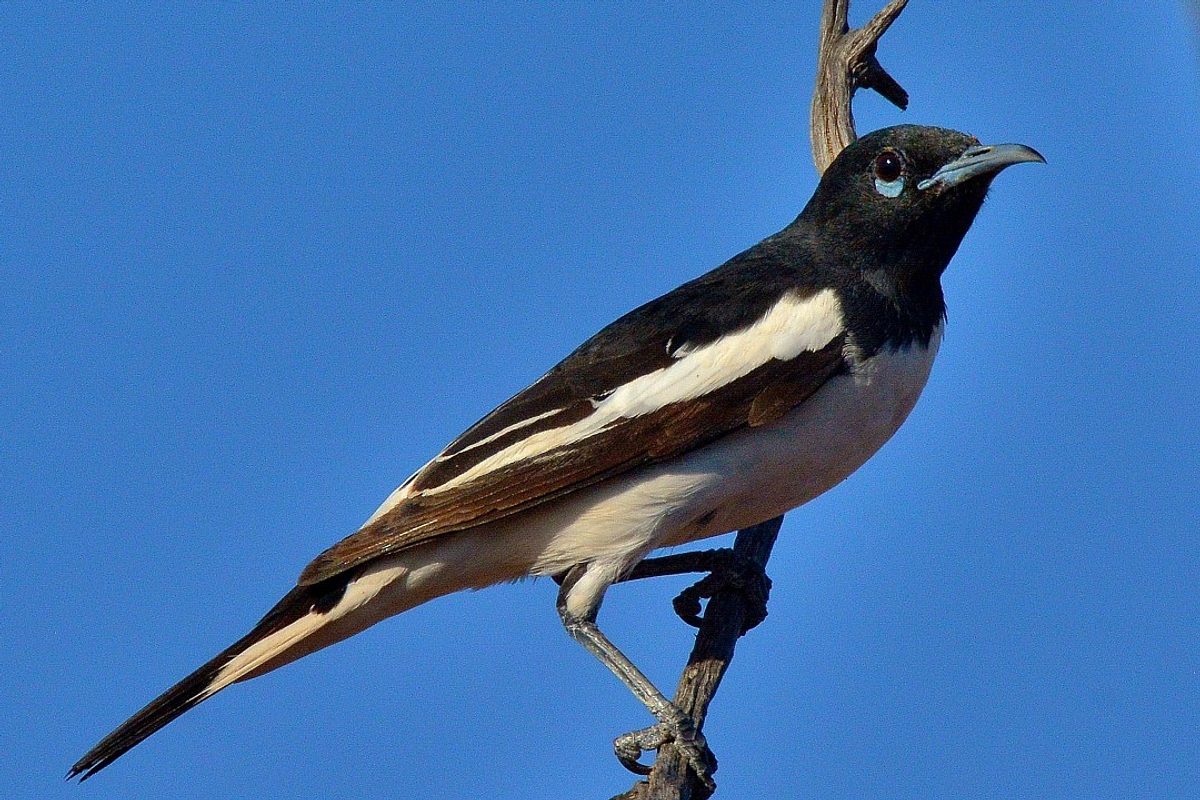
6. White-winged triller
As the name suggests, this is a musical bird that sometimes sings constantly during flight. Its song might be mistaken for the canary’s, so if you hear trilling in a tree, take a closer look.
The white-winged triller forages for insects but also catches them mid-flight. It will also eat insects, seeds and fruit on the ground.
The male is black and white with what could be described as a splash of white paint on the wings. The female is less striking in colour and markings.
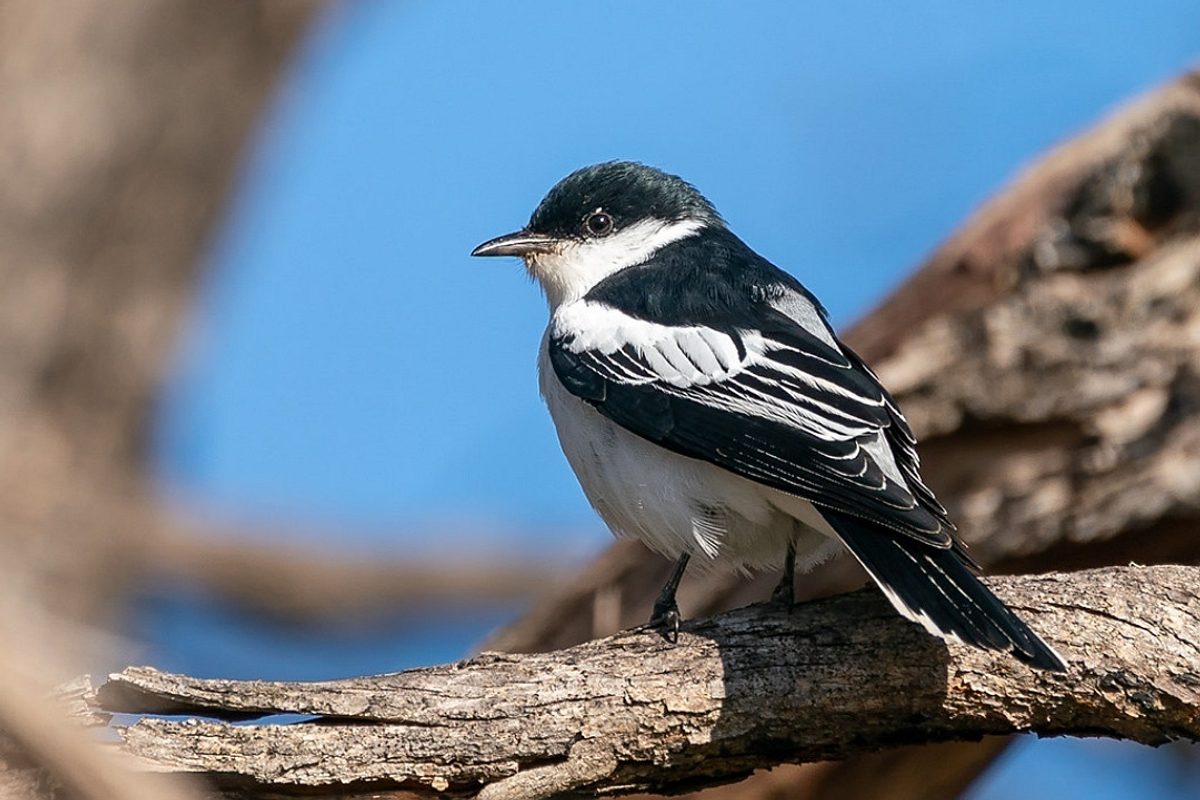
7. White-browed woodswallow
Grey and brown with a very distinctive white ‘eyebrow’ marking, this is also an insect-eater, though its brush-tipped tongue is also used to feed on nectar.
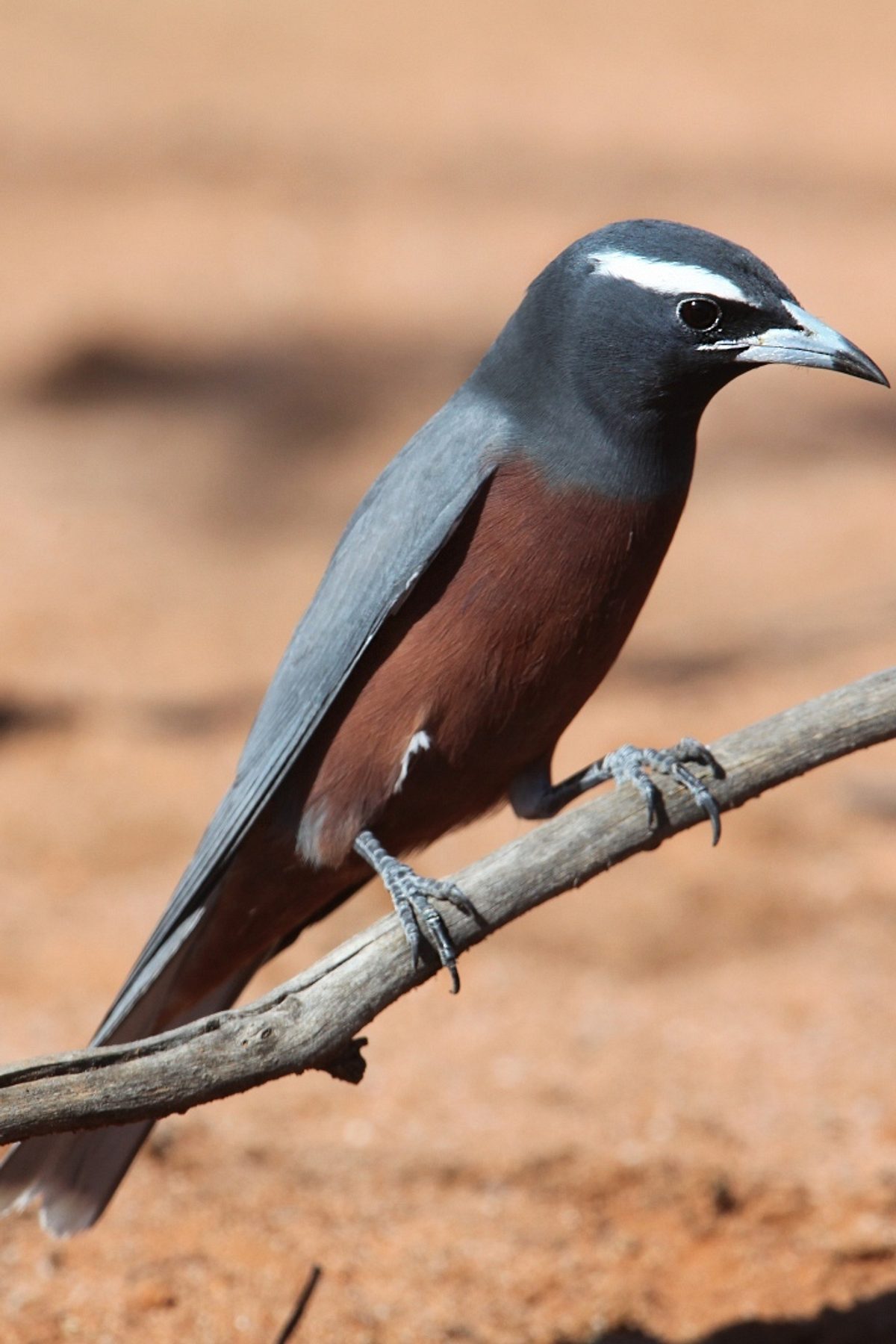
Want to learn how to attract birds to your garden? Check out ourstory.





